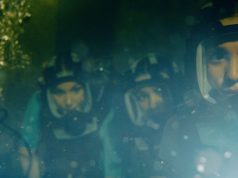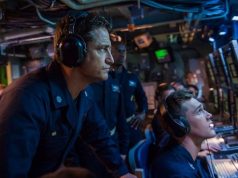In “Ghosts of the Abyss,” director James Cameron continues his obsession with the sea that began with “The Abyss” (1989) and reached its zenith with “Titanic” (1997). (Technically, you could count “Piranha II: The Spawning,” his 1981 feature-film debut, as a water film, though I doubt Cameron himself lists it on his resume.)
The historical research necessary to produce “Titanic” sparked in Cameron an intense interest in the wreckage of the real Titanic, which still sits on the ocean floor 12,500 feet down in the north Atlantic. He assembled a crew of scientists, oceanographers and Bill Paxton and, in August 2001, set out to film it.
The result is “Ghosts of the Abyss,” a film that is a) large-format and b) in 3-D. The former attribute is beneficial, as it allows us a greater view of the awe-inspiring images from within the actual wreckage of the actual Titanic. As for being in 3-D … you’d think that after all this time, 3-D technology would have gotten better. The 3-D goggles you have to wear still bug me — they sit too far down on my nose, giving the constant sensation of a fly having landed on me — and they give me a headache.
Furthermore, the images themselves are not great. Some scenes look fantastic in 3-D, but at other times, certain parts appear in double-vision. The eyes must constantly readjust to the movement. I don’t know how being in 3-D has helped the film any.
As a film, it’s a reasonably interesting journey to the bottom of the sea, aided by state-of-the-art cameras that can literally go from room to room within the ship, something humans could not safely do. Computer-generated graphics re-create the original scene, helping us put the often-unrecognizable wreckage in context.
“Titanic” star Bill Paxton’s reactions to traveling in a submarine to the ocean floor are an amusing bit of levity amidst the blend of reverence and “isn’t-this-cool?” enthusiasm that pervades the rest of the film. “Ghosts of the Abyss” is not educational in any real sense, but if you get past the annoyance of the 3-D glasses, it’s a fascinating glimpse at an awesome part of world history.
B- (59 min.; )





